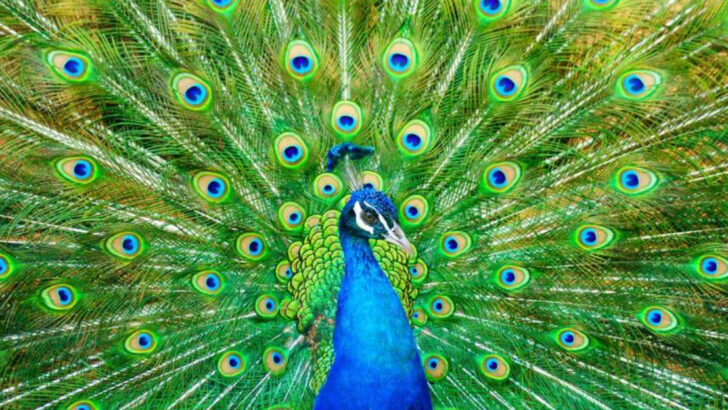Nature has a way of surprising us with its beauty, and some animals seem to take that beauty to the next level. From intricate stripes to geometric spots, there are creatures out there whose markings are so flawless, they look almost otherworldly. These patterns, which have evolved for purposes like camouflage, communication, or attracting mates, are nothing short of mesmerizing. They serve as a reminder that nature’s artistry is often far more complex than we can imagine.
What makes these animals truly captivating is how their patterns not only enhance their survival but also create a sense of wonder. Whether it’s the delicate markings of a butterfly’s wings or the striking design on a big cat’s coat, these creatures offer a glimpse into the creativity of nature. In this list, you’ll see animals that seem to carry the beauty of the natural world on their very skin, making it hard to believe that such perfect patterns exist outside of art and imagination.
Zebra
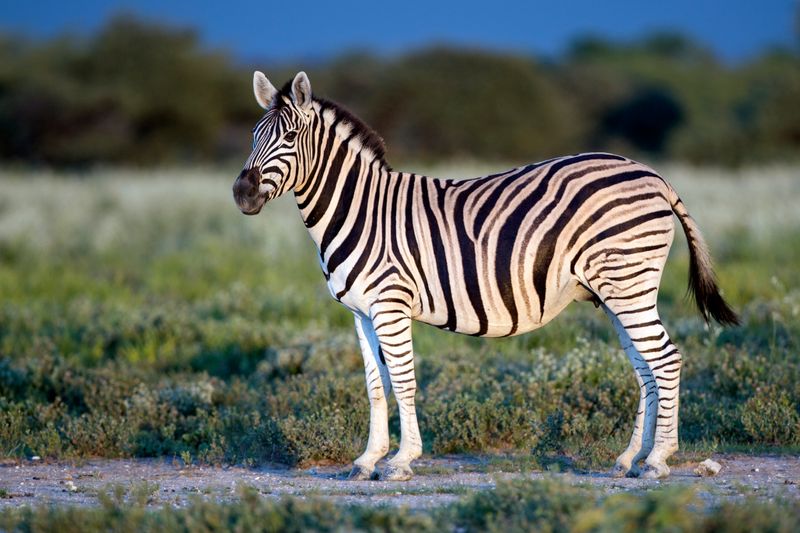
Zebras are icons of the African savannah, distinguished by their unique black and white stripes. These stripes are not just for show; they serve as a natural camouflage against predators. The patterns can confuse predators by creating an optical illusion when zebras stand together.
Interestingly, each zebra’s stripe pattern is as unique as a human fingerprint, allowing them to recognize each other. This remarkable adaptation has intrigued scientists for years. Although their purpose is still debated, the beauty of zebra stripes remains undeniable.
Their striking appearance makes zebras a favorite subject for photographers and wildlife enthusiasts alike.
Peacock
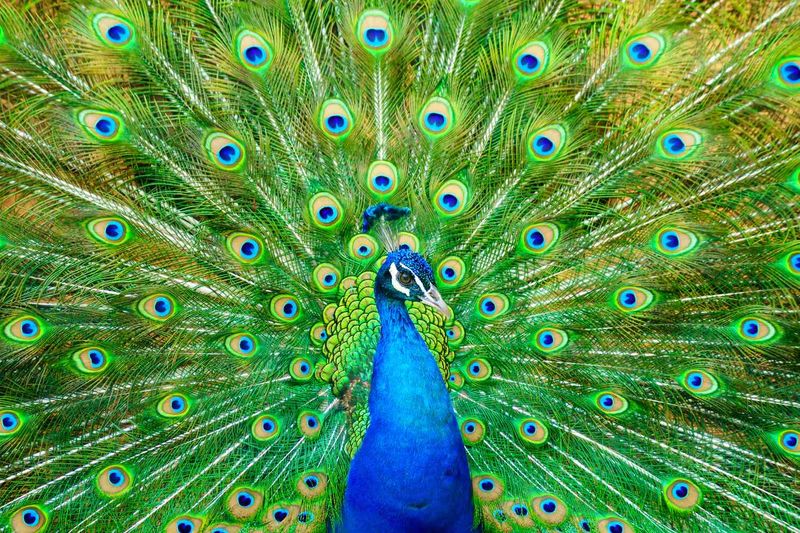
Peacocks are renowned for their dazzling tail feathers, which they fan out to impress mates. These feathers feature iridescent blues and greens, with eye-like patterns that captivate onlookers. Each feather appears painted, with colors shifting under different lights.
This display is part of the peacock’s courtship ritual. The bigger and brighter the display, the more attractive the peacock is to potential mates. Such beauty comes at a cost, as long tails can make them vulnerable to predators.
Despite this risk, their splendor is unmatched, making them a symbol of beauty worldwide.
Leopard
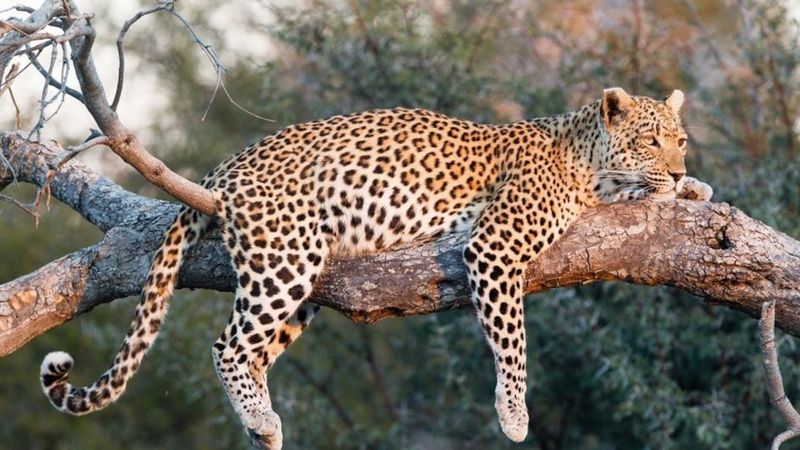
Leopards are the epitome of stealth in the animal kingdom. Their rosette-patterned coats provide excellent camouflage in the dappled light of their jungle habitats. These spots are unique to each individual, blending seamlessly into the foliage.
The rosettes help them stalk prey unnoticed, a testament to their adaptability and survival skills. Leopards are solitary creatures, relying on their patterns for both hunting and hiding.
Their enigmatic allure and grace captivate wildlife enthusiasts and photographers, making them one of nature’s most admired predators.
Tiger
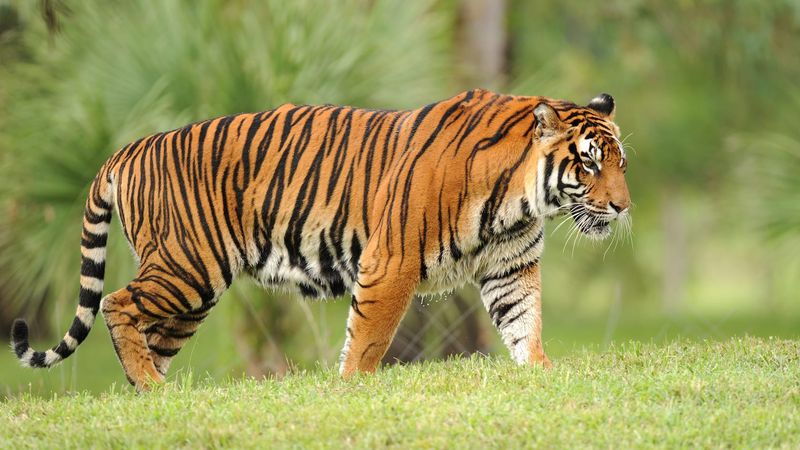
Tigers are majestic creatures, known for their powerful presence and striking patterns. Their orange coats adorned with black stripes are not just for show; they serve as camouflage in dense forests and grasslands.
The stripes break up their outline, allowing them to blend into their surroundings while hunting. Each tiger’s stripes are unique, much like human fingerprints. This uniqueness aids in identification and research.
Their regal appearance and fierce demeanor make them symbols of strength and beauty in many cultures, earning them a revered place in the animal kingdom.
Giraffe
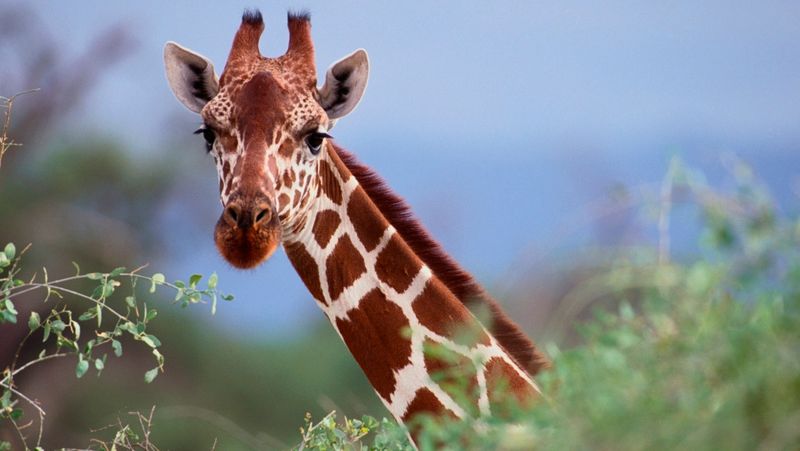
Giraffes are the tallest land animals, famed for their long necks and unique coat patterns. Their coats are covered in large, irregular patches of brown on a lighter background, providing effective camouflage in the dappled light of savannah trees.
These patterns are not just decorative; they help regulate body temperature by dispersing heat. Each giraffe’s pattern is unique, aiding in identification and social interactions.
Their gentle demeanor and striking appearance have made giraffes popular ambassadors for conservation efforts, reminding us of the diversity and majesty of wildlife.
Butterfly – Monarch
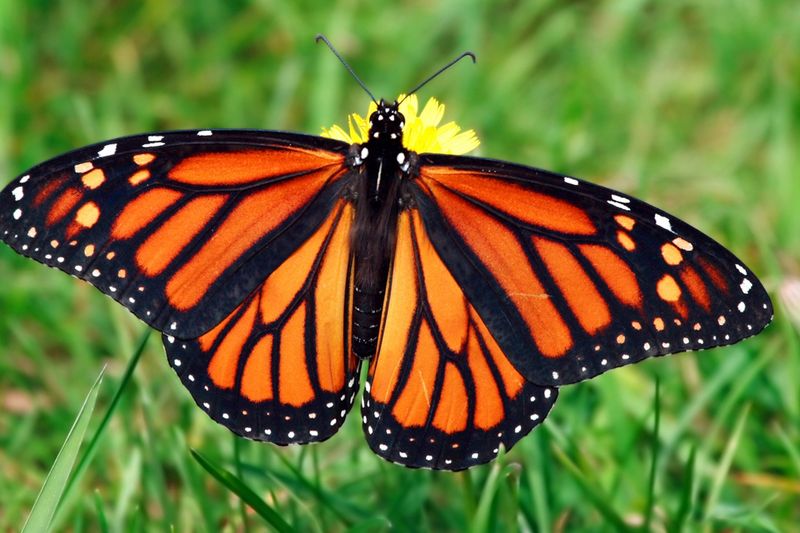
Monarch butterflies are a symbol of transformation and beauty. Their wings display vibrant orange with black veins and white spots, a design that signals toxicity to predators. This striking coloration serves as both a warning and a wonder.
During migration, Monarchs travel thousands of miles, showcasing their delicate yet resilient nature. Their journey is one of the marvels of the natural world, spanning generations.
The Monarch’s elegance and intricate patterns inspire artists and nature lovers, highlighting the delicate balance of ecosystems and the importance of conservation efforts.
Cheetah
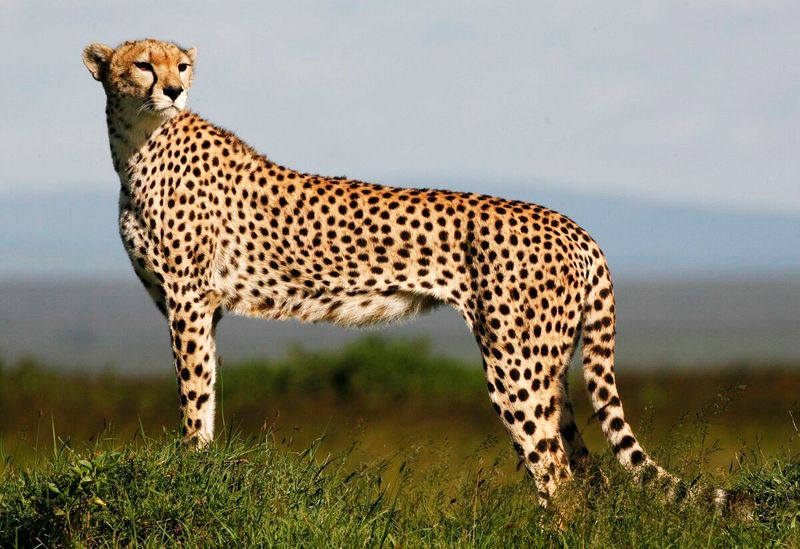
Cheetahs are built for speed, their slender bodies covered in black spots on a golden coat. These spots provide camouflage, helping them disappear into the tall grasses of the savannah while stalking prey.
Their distinctive tear-like streaks under the eyes reduce glare from the sun, enhancing their vision during high-speed chases. Each cheetah’s spot pattern is unique, aiding in individual identification.
Renowned for their speed, cheetahs captivate with their grace and agility, representing the pinnacle of evolutionary adaptation in the animal kingdom.
Dalmatian
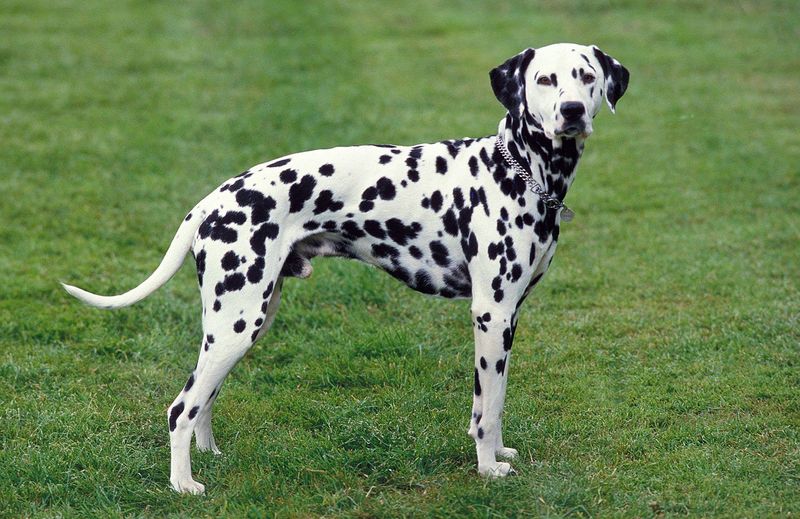
Dalmatians are iconic for their unique spotted coats, often associated with firehouses and popular culture. Their white fur is peppered with black or liver spots, each pattern distinct to the individual.
This breed’s history is rich, initially serving as carriage dogs and now beloved family pets. Their energetic and playful nature makes them excellent companions for active households.
The Dalmatian’s unmistakable appearance and charming demeanor have secured its place in hearts worldwide, making it one of the most recognizable dog breeds.
Snow Leopard
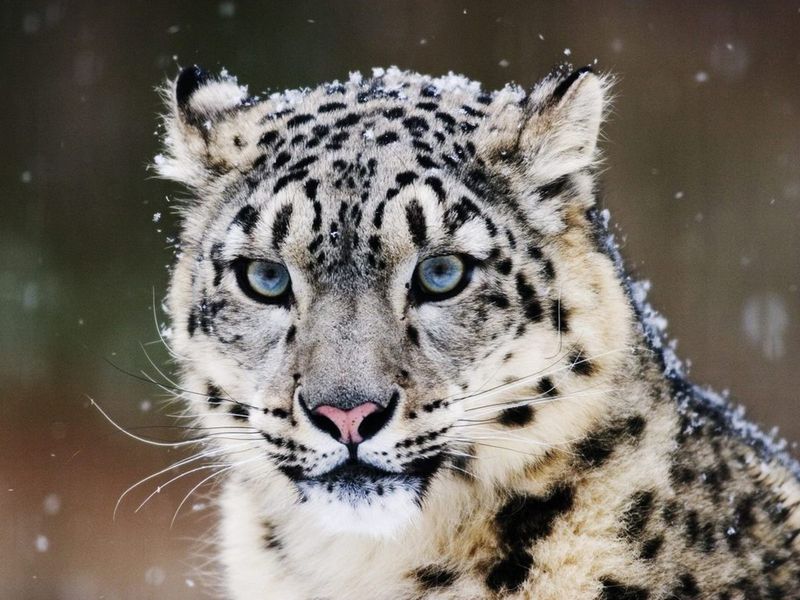
Snow leopards are elusive and enigmatic, their thick coats perfectly adapted to the cold, mountainous regions they inhabit. Their fur is gray with black rosettes, providing camouflage against rocky, snowy terrains.
These big cats are solitary and elusive, often referred to as “ghosts of the mountains.” Their patterns not only aid in hunting but also protect them from human threats.
Snow leopards inspire awe with their beauty and resilience, symbolizing the wild and rugged landscapes they call home.
Bengal Tiger
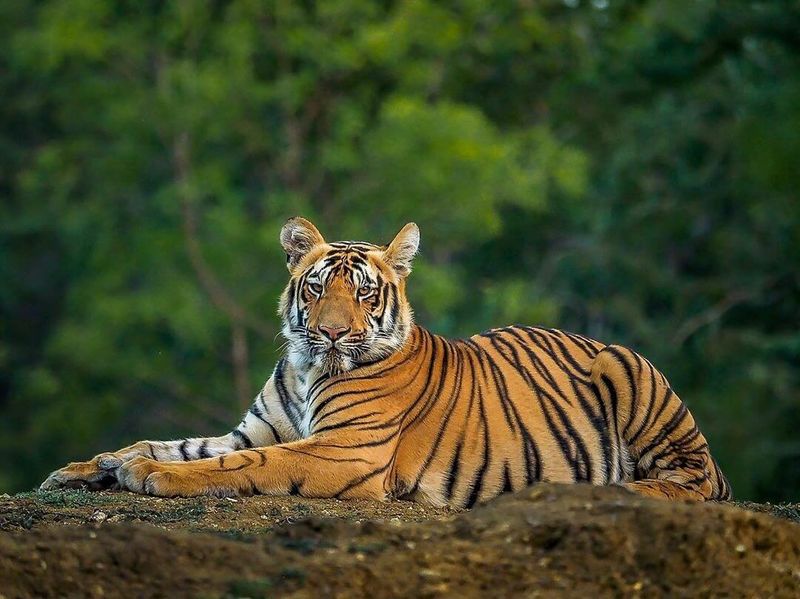
Bengal tigers are a subspecies known for their powerful build and striking appearance. Their orange coats with black stripes provide camouflage in dense forests, aiding in stealthy hunting.
The stripes help break up their outline, making them nearly invisible in the dappled light of their habitats. Each tiger’s pattern is unique, much like fingerprints, aiding in identification and study.
Their majestic presence and fierce beauty have made them a symbol of power and grace, revered in cultures around the world.
Ladybug
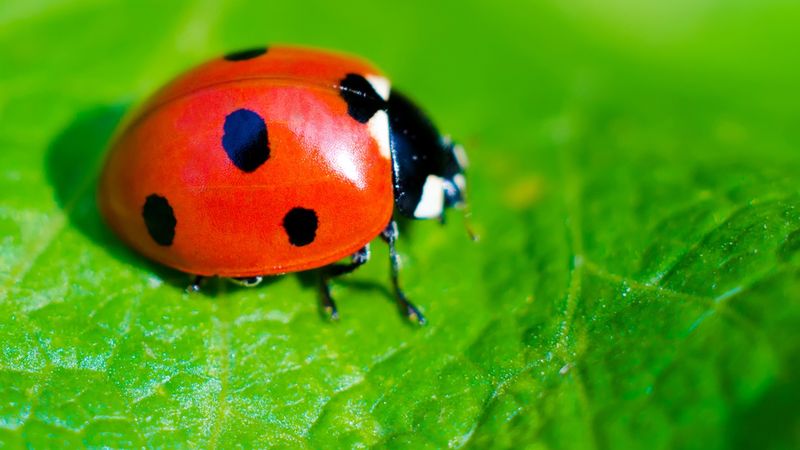
Ladybugs are small yet striking, their red shells adorned with black spots capturing attention. These patterns serve as a warning to predators about their unappetizing taste.
Beyond their beauty, ladybugs play a crucial role in pest control, with many gardeners welcoming them as natural allies. Their vibrant appearance belies their voracious appetite for aphids.
The ladybug’s cheerful patterns make them a favorite among children and adults alike, symbolizing good luck and natural harmony.
Clownfish
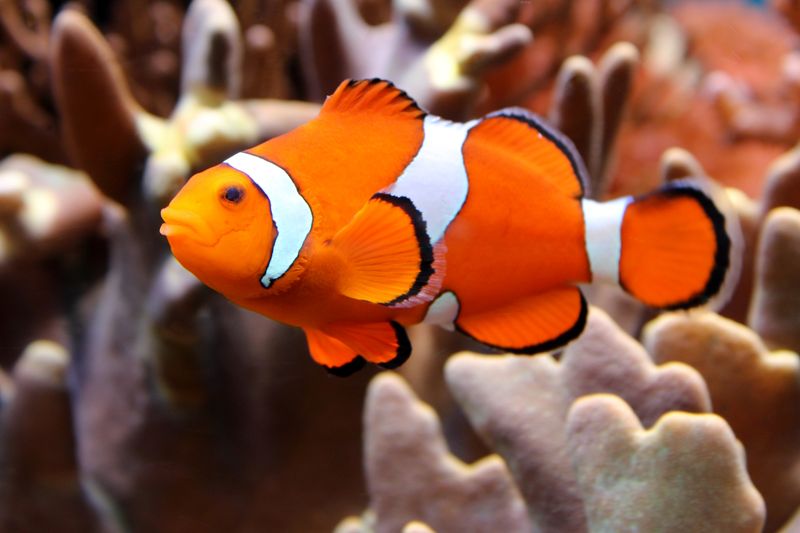
Clownfish are beloved for their vibrant colors and symbiotic relationship with sea anemones. Their orange bodies, accented with white bands and black outlines, make them stand out in the colorful tapestry of coral reefs.
These patterns serve as protection, signaling to predators that they are not easy prey. Clownfish form mutualistic bonds with anemones, benefiting both species.
Popularized by films, their charming appearance and fascinating ecology continue to captivate audiences, highlighting the wonders of marine life.
Okapi
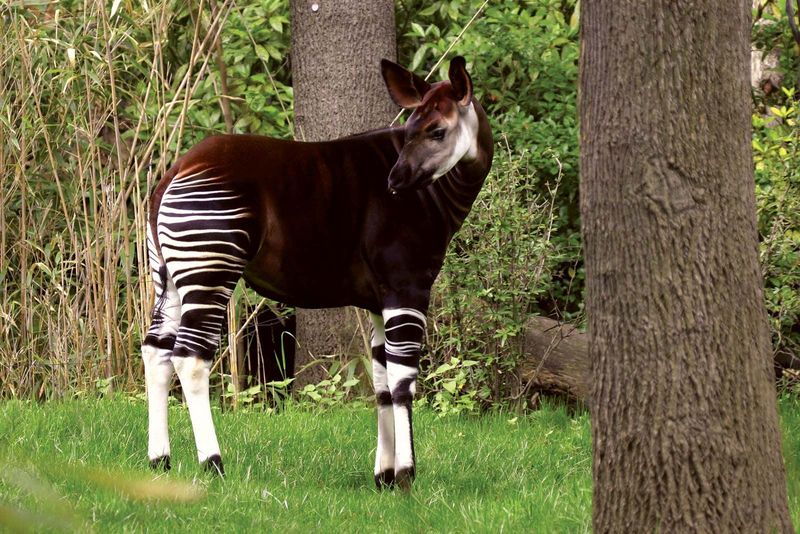
The okapi is a unique and elusive animal, often referred to as the “forest giraffe.” Its dark brown body and zebra-like striped legs provide perfect camouflage in the dense forests of the Congo.
This pattern helps them blend seamlessly into the dappled light and shadows, protecting them from predators. Despite their giraffe relatives, okapis have a shorter neck and solitary nature.
Their mysterious allure and distinctive appearance have piqued the curiosity of scientists and nature enthusiasts, symbolizing the hidden wonders of the animal kingdom.
Mandarin Duck
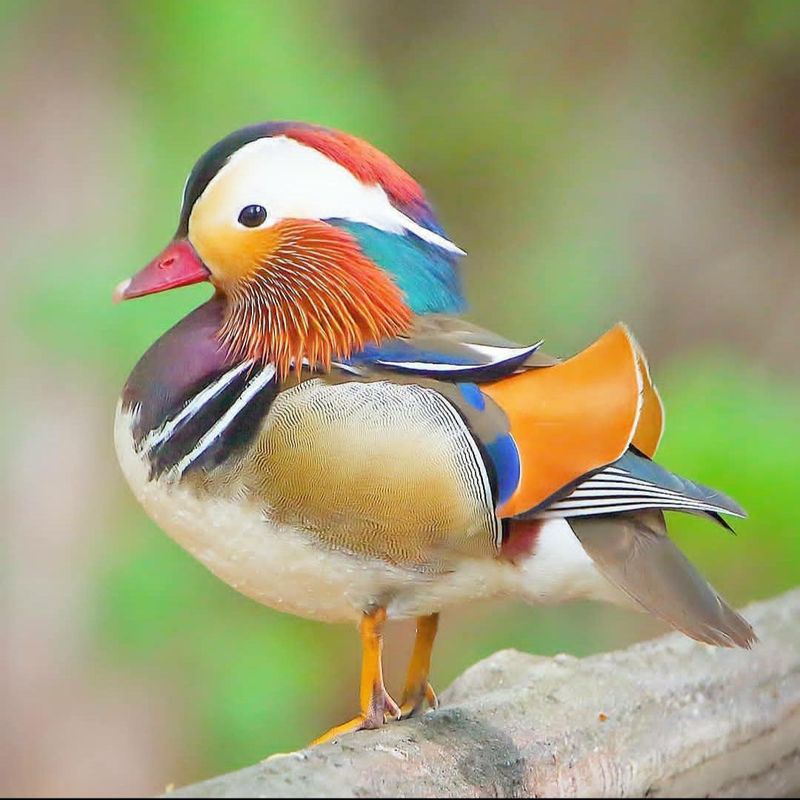
Mandarin ducks are renowned for their stunning and colorful plumage. Males boast a vibrant mix of orange, green, and purple, with intricate patterns that seem painted onto each feather.
These patterns play a crucial role in mating, as the males display their colors to attract females. Found in East Asia, they are often seen gliding gracefully across tranquil ponds.
Their beauty has made them a symbol of fidelity and love in various cultures, often featured in artwork and poetry.
Koi Fish
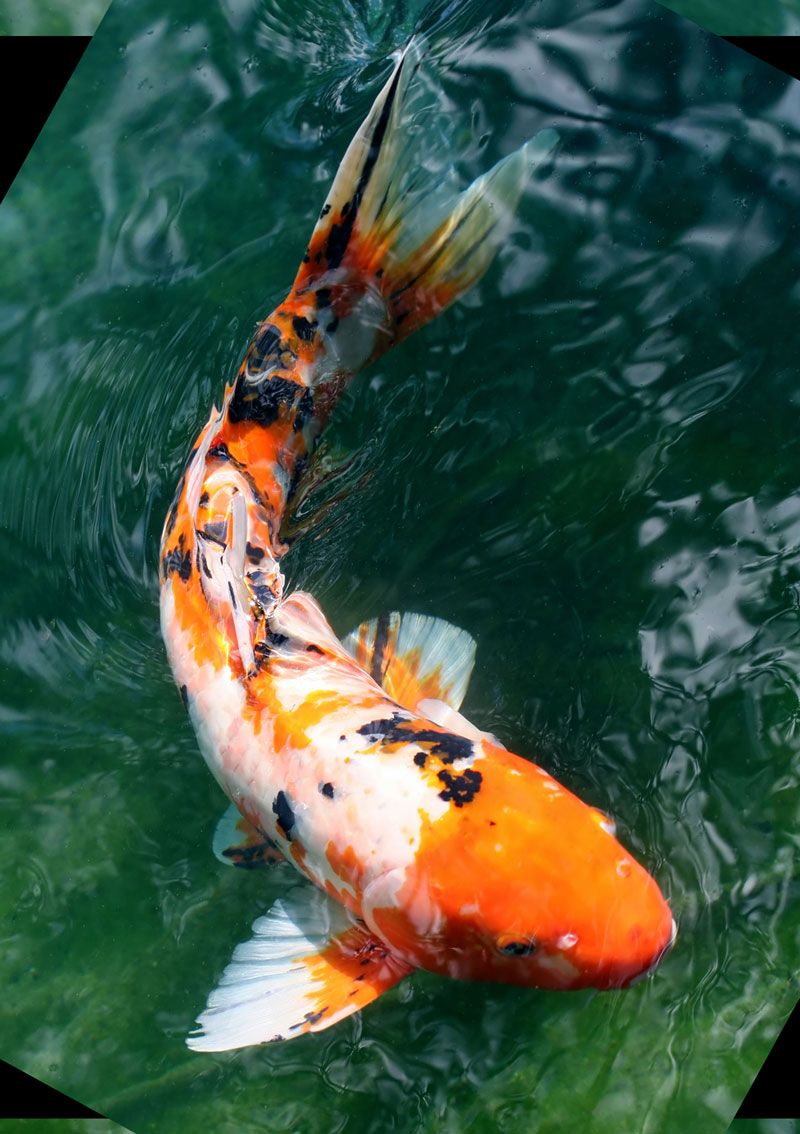
Koi fish are celebrated for their vivid colors and patterns, often seen in garden ponds worldwide. Their scales display a mix of reds, whites, and blacks, creating ever-changing patterns as they swim.
These designs are the result of careful breeding, each koi a living work of art. Their serene presence in water gardens brings a sense of tranquility and harmony.
Koi symbolize perseverance and strength, inspiring those who gaze upon their beauty, and are highly prized in many cultures for their aesthetic appeal.
Jaguar
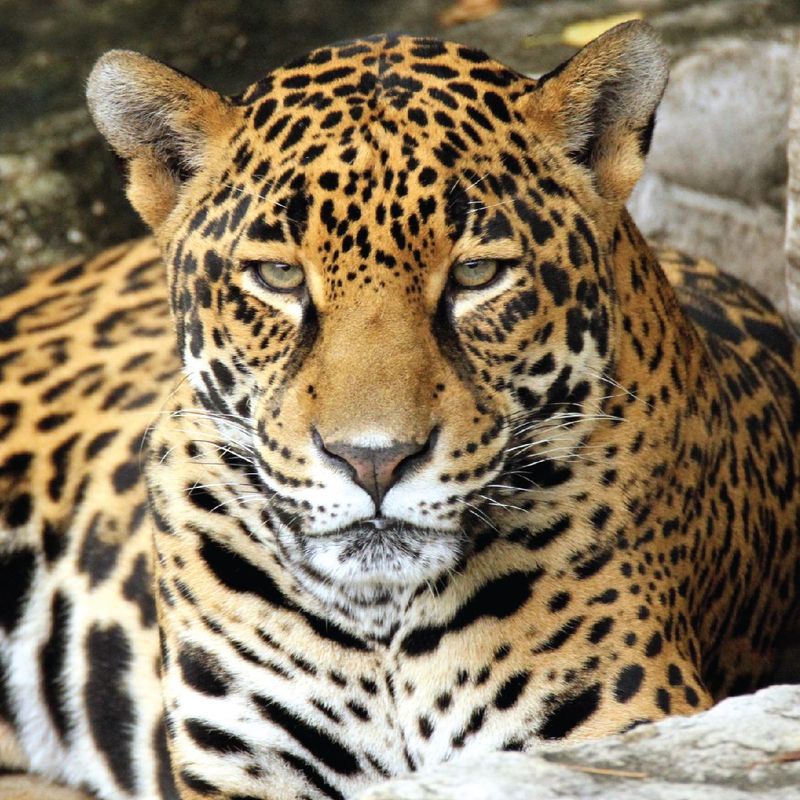
Jaguars are powerful predators known for their stunning rosette-patterned coats. These markings provide camouflage in the dense jungles of the Amazon, making them effective hunters.
Each jaguar’s pattern is distinct, helping researchers identify and track individuals. Their strength and beauty make them a formidable and admired species.
Jaguars symbolize power and mystery, capturing the imagination with their silent yet dominant presence in their jungle habitats.
Python
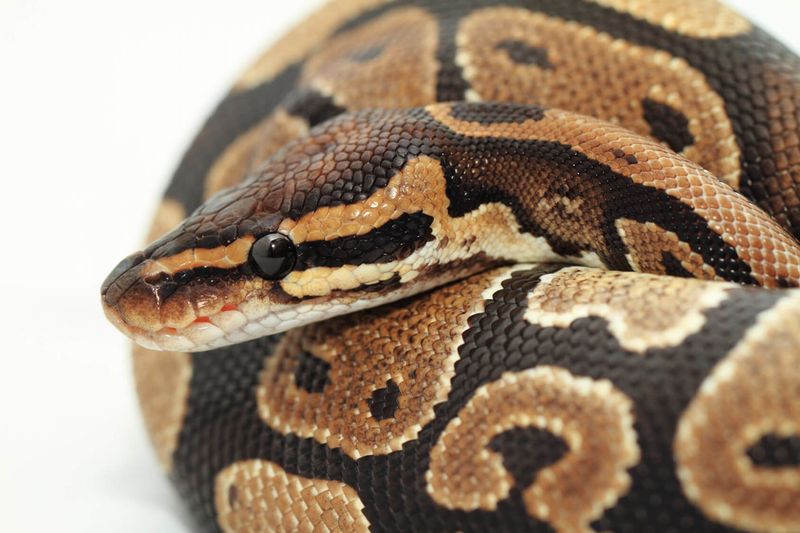
Pythons are known for their impressive size and distinctive scale patterns. These patterns, often in earthy tones, provide excellent camouflage in their varied habitats, from forests to grasslands.
Their scales help them blend into the foliage, aiding in ambush hunting tactics. Pythons are constrictors, using their powerful bodies to subdue prey.
Their unique patterns and formidable presence make them fascinating subjects for herpetologists and wildlife enthusiasts, highlighting the diversity of reptilian life.
Cuttlefish
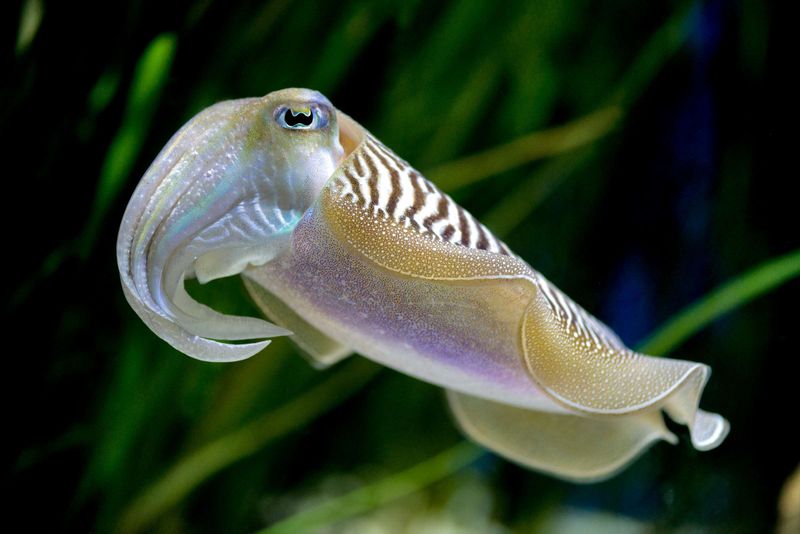
Cuttlefish are masters of disguise, capable of changing their skin color and pattern within seconds. This ability helps them blend into their surroundings, evade predators, and communicate with peers.
Their patterns can be mesmerizing, shifting in waves across their bodies as they move through coral reefs. This adaptability is a result of specialized skin cells called chromatophores.
Cuttlefish are a testament to the wonders of marine adaptation, their patterns both functional and beautiful, inspiring awe and scientific inquiry alike.
Quail
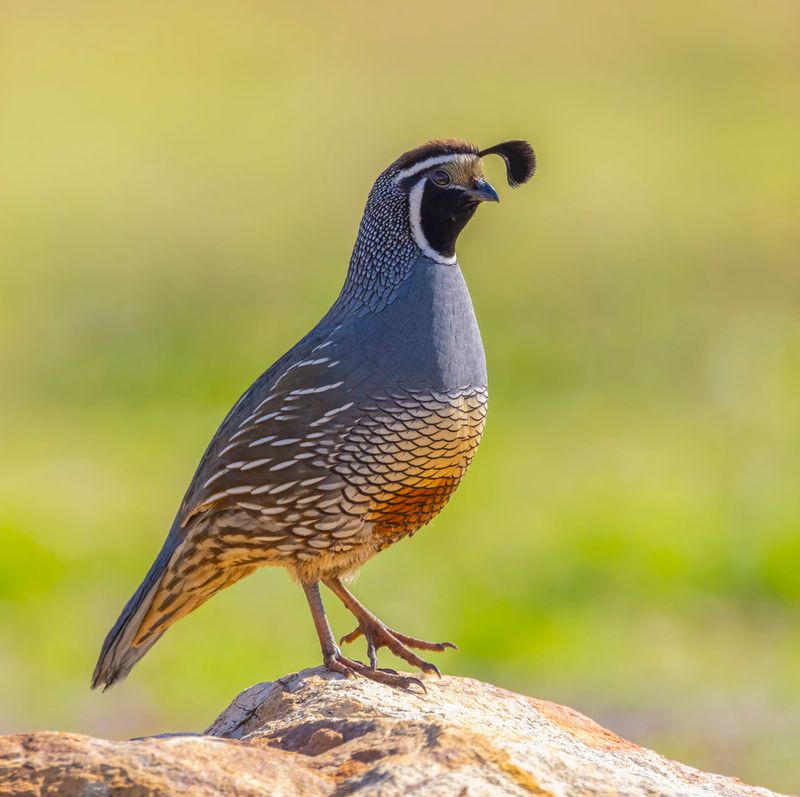
Quails are small, plump birds known for their intricate feather patterns that blend into their surroundings. Their plumage, a mix of browns and tans, provides excellent camouflage in grasslands and forests.
These patterns help quails evade predators while foraging on the ground. Despite their small size, quails are resilient birds, capable of quick bursts of flight if threatened.
Their subtle beauty and adaptability make them a cherished sight for birdwatchers and a symbol of nature’s intricate artistry.
Flamingo
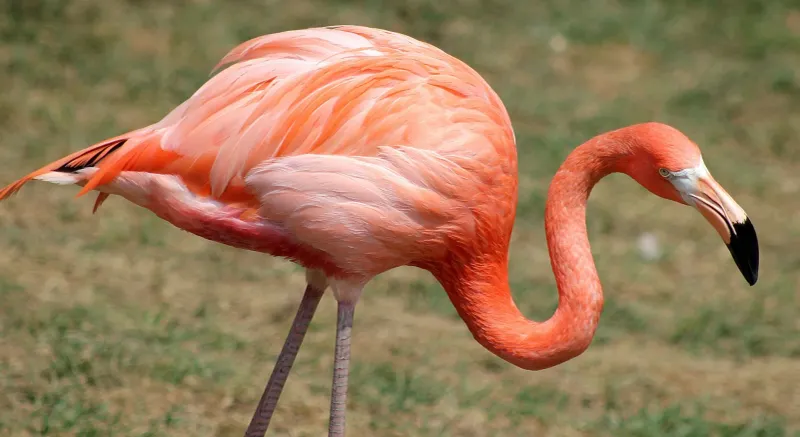
Flamingos are instantly recognizable with their vibrant pink feathers and elegant posture. This coloration comes from their diet, rich in beta-carotene from algae and crustaceans.
Their iconic one-legged stance and social nature make them a fascinating subject for observers. Flamingos often gather in large flocks, their collective beauty a spectacle.
These birds symbolize grace and vibrancy, their striking appearance captivating bird enthusiasts and inspiring cultural symbolism worldwide.
Mandrill
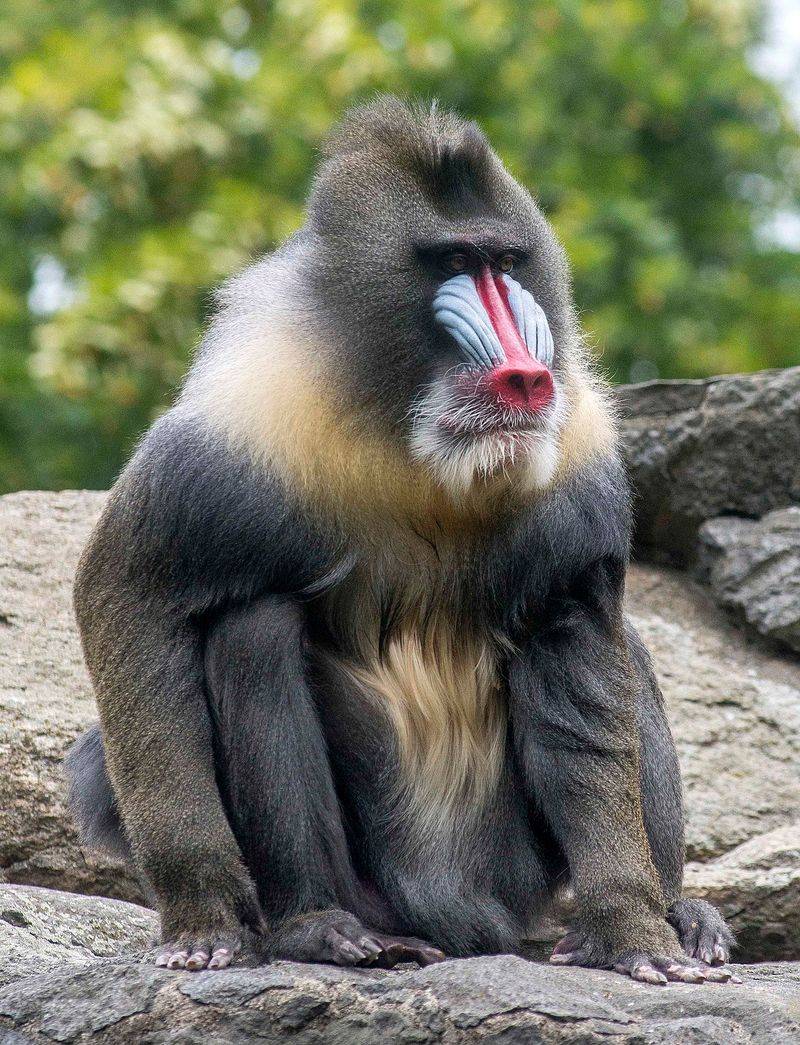
Mandrills are one of the most colorful primates, with their faces displaying striking blue and red hues. These patterns serve as signals in social interactions, with brighter colors indicating dominance.
Their colorful appearance is complemented by a thick mane and expressive eyes, making them one of the most visually appealing primates.
Mandrills inhabit the rainforests of Central Africa, where their complex social structures and vivid coloration contribute to their allure and fascination.
Atlantic Puffin
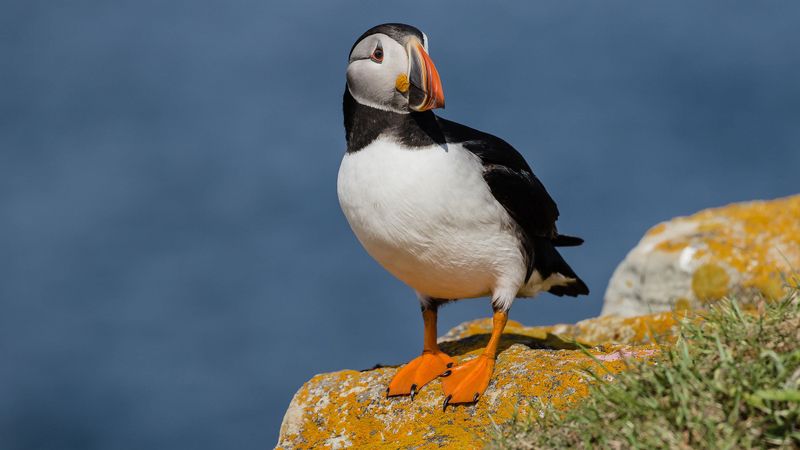
Atlantic puffins are charming seabirds with distinctive black and white plumage and bright orange beaks. Their colorful beaks, which grow more vibrant during the breeding season, are used to attract mates.
These “sea parrots” are excellent swimmers, using their wings to ‘fly’ underwater while hunting for fish. Puffins often nest on cliffs, their colonies lively with activity.
Their endearing appearance and unique behaviors make them favorites among birdwatchers, symbolizing the rugged beauty of northern coastlines.
Poison Dart Frog
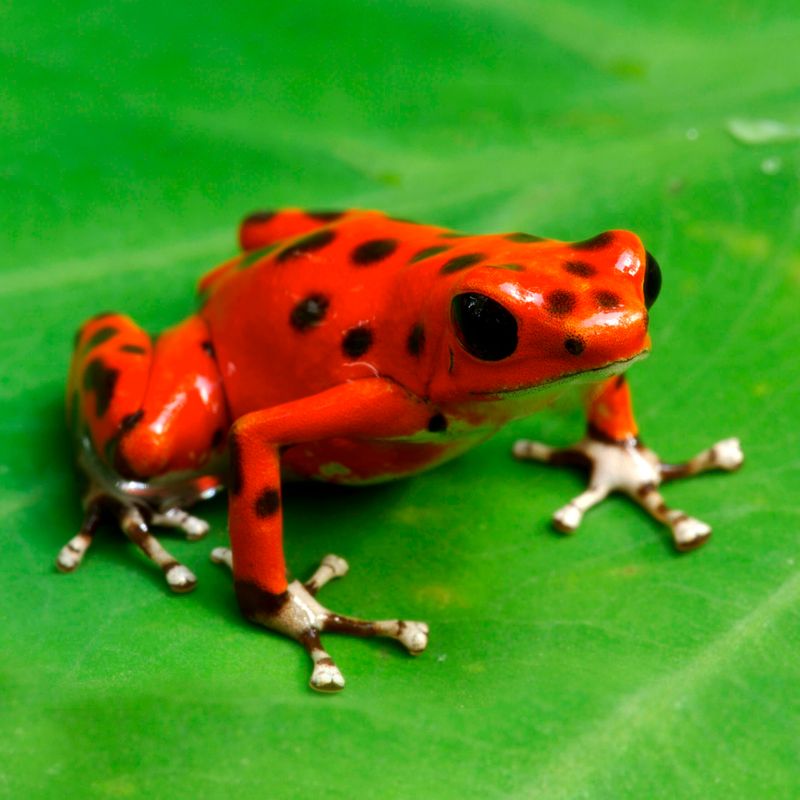
Poison dart frogs are tiny but pack a visual punch with their vibrant colors and patterns. These hues serve as a warning to predators about their toxicity, a defense mechanism in the wild.
Found in Central and South American rainforests, their bright yellow, blue, or red patterns are a sharp contrast to the lush green surroundings.
Their striking appearance and potent defense system fascinate scientists and nature lovers, highlighting the diversity and danger of tropical ecosystems.
Chameleon
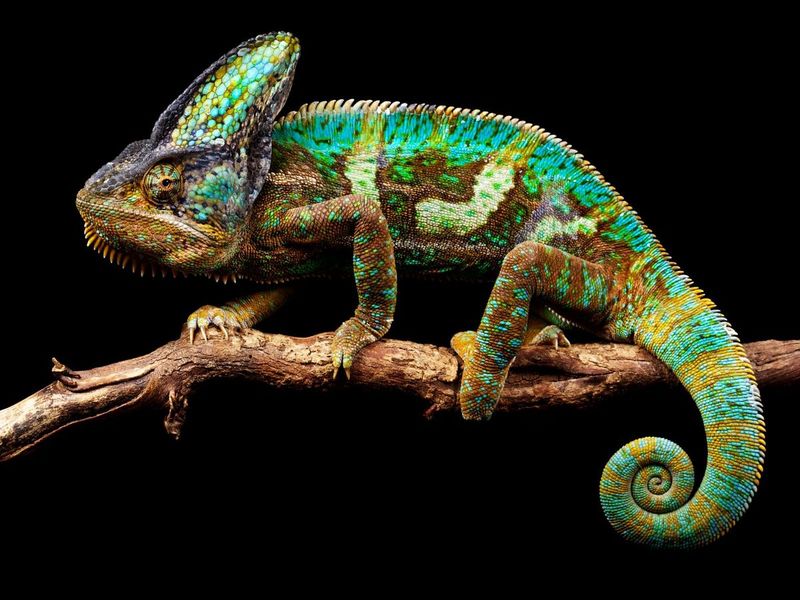
Chameleons are renowned for their ability to change color, a skill used for communication and camouflage. Their skin patterns can shift in seconds, reflecting their mood or surroundings.
This adaptability helps them avoid predators and communicate with other chameleons. Each species of chameleon has its unique pattern and color palette, making them a diverse and fascinating group.
Their color-changing ability and unique appearance make chameleons a symbol of adaptability and intrigue in the natural world.
Zebra Longwing Butterfly
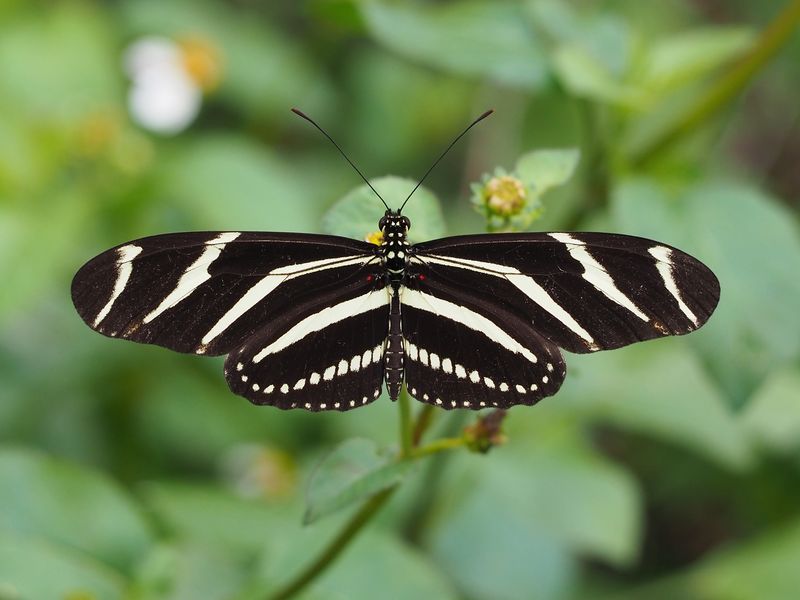
Zebra longwing butterflies are known for their elongated wings with distinctive black and pale yellow stripes. These patterns are not only beautiful but also serve as a warning to predators due to their unpalatable taste.
They are social butterflies, often seen flying in groups or resting together. Found in the Americas, their graceful flight and striking patterns captivate both scientists and butterfly enthusiasts.
The zebra longwing’s elegance and unique behavior make it a beloved species, illustrating the delicate interplay of beauty and survival in nature.
Glasswing Butterfly
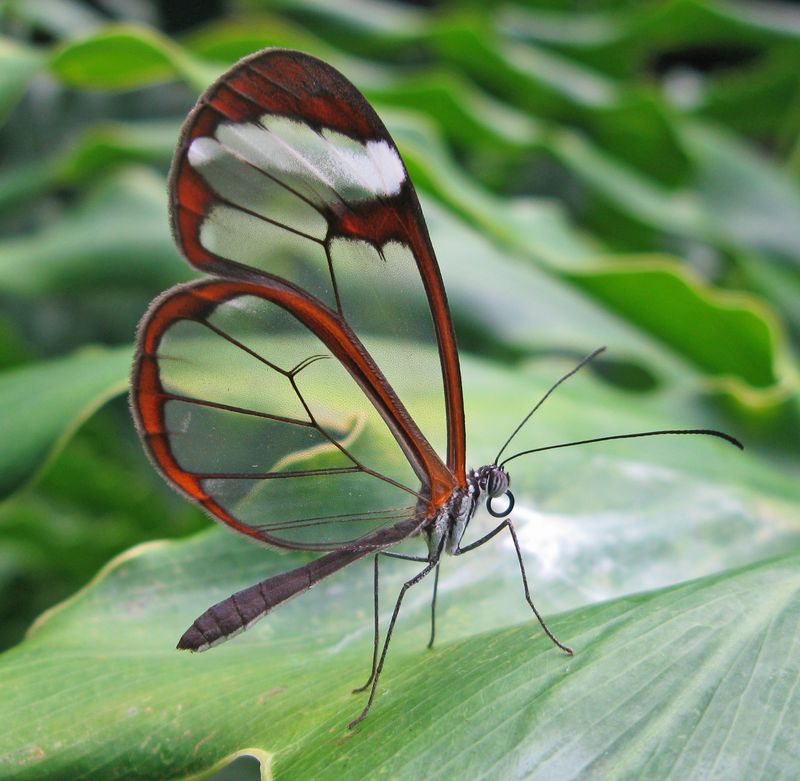
The Glasswing Butterfly, native to Central and South American rainforests, mesmerizes with its ethereal beauty. Its wings, almost entirely transparent, give it a ghostly appearance that blends seamlessly with its surroundings. The delicate veins crisscrossing the wings create an enchanting mosaic pattern.
This transparency serves as a clever camouflage against predators, allowing it to vanish into the lush foliage. These butterflies are often seen fluttering gracefully in the early morning light, their wings catching the slightest gleam, adding a touch of magic to the rainforest.
Watching a Glasswing in flight is like witnessing a living, breathing piece of art.

